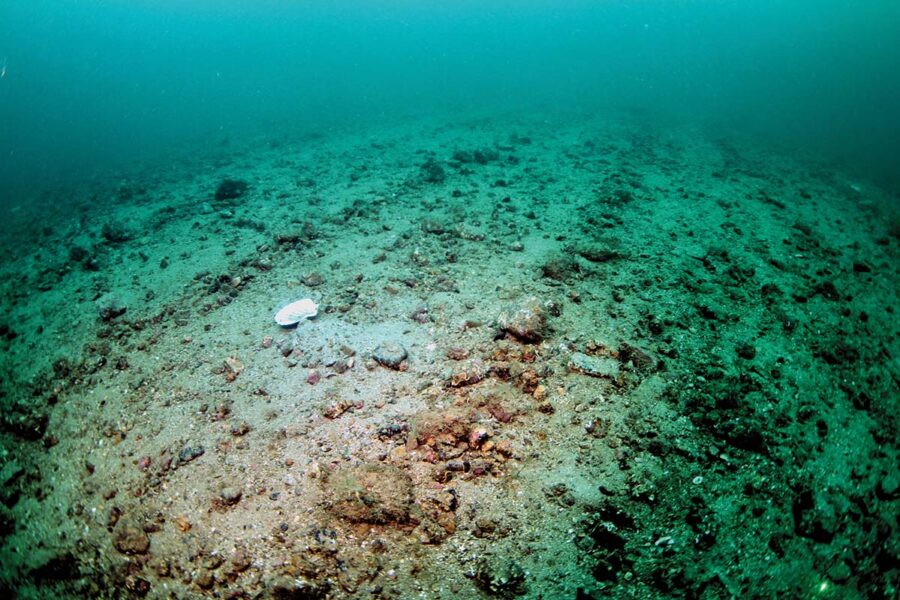Reducing the carbon footprint of bottom trawling requires bold action from governments, and collaboration between fishers and environmentalists, writes Dr Steve Rocliffe, senior technical adviser at Blue Ventures
Greenhouse gas emissions from the global food system are one of the largest contributors to climate change. Reducing the size of this carbon ‘foodprint’ is vital to meeting global emissions targets, and to keeping global warming within manageable limits.
In this battle, what we choose to eat can make a huge difference, and it’s clear that we need to eat more fish. Seafood provides protein and nutrients to billions of people, and it does so at an environmental cost that’s 10 to 20 times lower than beef or lamb. Some species like sardine can be caught, transported and sold so efficiently that they’re among the best foods we can eat for the planet – even more so than many fruits and vegetables.
But not all seafood has the same carbon footprint. In particular, some species caught by bottom trawling (including flatfish, shrimp and langoustine) can have much higher emissions, largely because dragging a heavy net across the seafloor is an energy-intensive process. It’s estimated that the carbon footprint of bottom-trawl fisheries is about three times higher than non-trawl fisheries, and that demersal species caught by bottom trawls may create more than four times the emissions of those caught by gill-nets and tangle nets.
And that isn’t the end of the story. In an eyecatching study in the journal Nature, scientists estimated that for every tonne of seafood landed by bottom trawlers, about 50t of CO2 are released from the seabed by trawl nets.
We don’t know how much of this carbon stays in the ocean and how much ends up in the atmosphere, so this finding, and particularly the accompanying headlines that drew emissions comparisons between bottom trawling and flying, remain highly controversial. But were these figures to be added into existing footprint estimates, the carbon footprint of some species caught by bottom trawling would likely exceed those from all other sources of protein, including livestock.
Given that bottom trawling makes a greater contribution to the climate crisis than other major gear types, it follows that it should be a focus of transformative efforts. Happily, there is a clear path to achieving this transformation, and it starts with more of the same: rebuilding stocks. More fish in the sea means less fuel is needed to catch them.
The huge progress made in recent years, particularly in UK, EU and US waters, is cause for optimism and celebration, but we must go further. Rebuilding stocks isn’t just vital for the ocean and for livelihoods; it’s also one of the best ways to improve the carbon footprint of bottom-trawl fisheries.
Wherever possible, we will also need to move to fishing practices that are less fuel- intensive than bottom trawling. Switching gears can reduce emissions by up to 60% and create additional biodiversity benefits, depending on the species targeted. Evidence from Scandinavia suggests that changing from bottom trawls to creel, gill-net and Danish seines could reduce fuel use by up to four times per kg of langoustine and cod, and by up to 15 times per kg of flatfish, respectively.
We’ll also need to more seriously consider transitioning fleets to low-emission alternatives, particularly electric, hybrid, hydrogen and sail-assisted technologies.
Then there’s the Gordian knot of spatial protection, which must be unravelled. MPAs are not the silver bullet that many conservationists claim, but they can have tremendous value for fisheries when they are properly funded, and when fishing communities are actively involved in their design and management.
We will need to consider seabed carbon in MPAs, and also to think about expanding and strengthening national inshore exclusion zones for small-scale fishers in which bottom trawling is restricted and high-carbon kelp forests and seagrass meadows safeguarded.
The sector can’t and shouldn’t do all this alone. It requires bold action by governments to end fossil fuel subsidies and redirect them to incentivise and support wholesale transformation. It also requires all of us to play a part. We fishers, scientists, coastal communities, environmentalists, seafood companies and resource managers all want the same thing: healthy oceans and healthy coastal livelihoods.
To best achieve this, we must continually find new ways to collaborate, to co-operate and to agitate for change. We must favour dialogue over division, doing business over dumping boulders. This is far from easy, but it’s the key to reducing our impacts on the ocean and the environment, and to ensuring sustainable fisheries and vibrant oceans long into the future.
Let’s hope that when global leaders gather in Glasgow this week for the UN Climate Change Conference, fish is firmly on the menu.
Dr Steve Rocliffe is a senior technical adviser at Blue Ventures, which works with coastal communities globally to rebuild fisheries and restore ocean life. Blue Ventures is a founding member of the Transform Bottom Trawling coalition.
This article is from Fishing News’ special feature on industry responses to the climate crisis as part of the COP26 conference in Glasgow. Subscribe to Fishing News here or buy the latest single issue for just £3.30 here. Main image credit: Howard Wood/ COAST.








